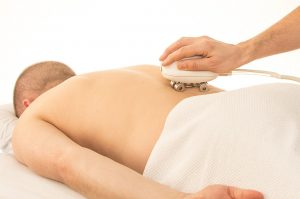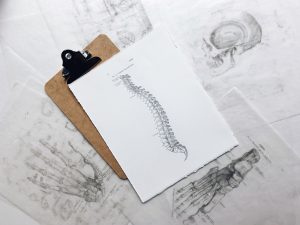Right from your posture and lifting weight to sudden jerks and age; there can be one or more reasons as to why you are experiencing lower back pain. While lifestyle changes and stretching exercises often help to improve this nagging backache, identifying what is causing your lower back to hurt is your best bet for treating it successfully.
Chances are that you may be suffering from one of the many common causes of low back pain including muscle/ligament pulls or tears, sciatica, and disc-related problems. To learn more about these and other common causes of chronic lower back pain, find the information below.
Muscle & Ligament Pulls/Tears
A pull or strain can occur when an activity or movement causes the muscle to stretch too much or tear. This, in turn, can sprain the ligament or cause tearing, leaving you with pain in your lower back region. The best way to avoid such sprains and tears of the muscle and ligament is to limit the amount of stress on your lower back when performing any activities including workouts. Similarly, maintaining a good posture can reduce the tension caused to your lower back when sitting for long hours at a stretch.
Spondylolisthesis
The pain caused by spondylolisthesis is a result of a lower vertebra moving forward and resting on the vertebrae just beneath it. This spinal condition can cause chronic lower back pain, however, it can be treated. Depending on the type of spondylolisthesis you are diagnosed with, or the severity of the condition, you may be advised therapeutic care or surgical treatment.
Ruptured or Bulging Discs

Spinal discs are soft in nature and hence, absorb shocks between the vertebrae. If the centre of the disc begins to bulge, or rupture, it may pinch your spinal nerves which leads to severe low back pain. In some cases, you may also experience sciatica which causes shooting pain down the back of your legs. With that said, bulging or ruptured discs sometimes go unnoticed because they do not always make contact with a nerve.
Facet Joint Syndrome
Facet joints have cartilage inside them which can swell with age or other conditions, thus causing low back pain when occurring towards the lumbar spine. Painful symptoms are experienced immediately because the outer ligament of the facet joint is innervated by nerves. In some cases, facet joint syndrome is experienced in conjunction with disc pain.
Osteoarthritis
With age, the cartilage between bones may wear down, causing osteoarthritis. It can affect any joints in the body, however, the most common occurrences are experienced in one’s spine, knees, hands, and hips. Where your lower back is concerned, osteoarthritis can affect one or more levels of the lumbar spine. Since the damage to the joints cannot be reversed, doctors suggest a few alternative treatments that will help slow down the wear and tear caused to the cartilage.
Spinal Deformity

Age and certain types of surgeries can cause spinal deformity. This may come in the form of kyphosis which is a forward curvature of the spine, or scoliosis which causes the spine to curve sideways. When or if the deformity causes problems in facet joints, discs, or sacroiliac joints, one will experience severe pain in the back including the lumbar spine. This condition can occur in humans of any age and sex.
Sciatica
Pain running up and down the sciatic nerve can cause chronic pain in your lower back region, as well as the hips, buttocks, and the back of the legs. It typically occurs on one side and can be caused by a herniated disc or spinal stenosis. Sciatica treatment rarely requires surgery; in most cases, the diagnosis will come with a couple of weeks of physiotherapy and medication.
Degenerative Disc Disease
Discs remain hydrated throughout one’s youth and then start to dry up as they grow older. When this happens, the outer wall of the disc is prone to wear and tear which ultimately causes pain in your upper, middle, and lower back. If the disc collapses altogether, one may experience spinal stenosis — a condition wherein the spaces between the vertebrae become smaller, thus increasing the strain on one’s spine. Symptoms of spinal stenosis include chronic pain in the lower back and neck.
Sacroiliac Joint Dysfunction

The sacroiliac joints are located at the bottom of the spine and link the pelvis to the sacrum. Since it does not experience much movement, the primary function is shock absorption when there is tension or a lot of movement between the top and bottom of the spine. Sacroiliac joint dysfunction occurs when there is either too little or too much movement of the joints, thereby causing pain in the lower back, as well as the legs.
If you are experiencing chronic or persistent low back pain, chances are that one of the common conditions/diseases mentioned above is the cause of it. When it comes to a nagging backache in this region, don’t wait for your condition to worsen, visit your local chiropractic clinic or an orthopaedic physician for treatment related to lower back pain immediately!
